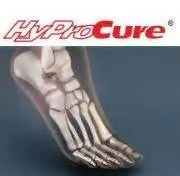How to Prevent Running Injuries
Many common running injuries are caused by overuse and overtraining. Several common injuries can occur due to running. When the back of the kneecap starts wearing away and starts causing pain in the knee, this is commonly referred to as runner’s knee. Runner’s knee can occur because of decreased strength in the quadricep muscles or shoes that do not offer proper support to the inside of the forefoot. Runner’s knee usually is treated with strengthening exercises focusing on the quad muscle and sports orthotic. To prevent runner’s knee, efforts should be focused on hip strengthening. Physical therapy is also beneficial in helping to learn the best exercises to heal runner’s knee. To prevent runner’s knee, strengthen the quad muscles to keep the kneecap aligned.
Overtraining is one cause of a common running injury called iliotibial band syndrome, which occurs when the iliotibial band gets irritated, causing pain and discomfort to the outside knee area. Another common running injury is known as plantar fasciitis, which occurs when the bone in the foot becomes inflamed and irritated. This injury primarily causes pain in the foot. Causes can include a high arch, incorrect footwear, tight muscles and flat feet. The best way to avoid plantar fasciitis is stretching and proper footwear.
Stress fractures are a common injury for runners. These fractures can occur because of overtraining, lack of calcium or running style. In runners, it is common for stress fractures to occur in several locations including the inner bone of the leg, the thighbone, the bone at the base of the spine and the toe bones in the foot. The best approach to preventing stress fractures are proper footwear maintenance and running on a surface with enough “give” to absorb some of the shock produced during running.
Besides overtraining, other causes of these common running injuries are poorly fitting footwear, irregular biomechanics, and lack of flexibility and strength. The best way to avoid running injuries is to prevent them. Fortunately, each of these common running injuries can be prevented. To avoid running injuries it is highly recommended to wear only footwear that fits properly and that suits your needs. Running shoes are the only protective gear that runners have to safeguard them from injury; therefore, choosing the correct footwear for running is important. It is important, too, to think about other aspects of your running routine like training schedules, flexibility and strengthening, and tailor them to your needs in order to minimize the possibility of injury. Regular stretching before and after running should be considered also when trying to avoid running injuries. Stretching keeps muscles limber resulting in greater flexibility.
Nerve Disorders of the Foot and Ankle
Similar to well-known nerve disorders in the hands, such as carpal tunnel syndrome, nerve disorders that affect the foot and ankle occur in patients for reasons ranging from stress to genetics. Nerve disorders of the foot should be addressed right away because they may be immobilizing in serious cases. Two of the most common nerve disorders of the foot and ankle are Interdigital Neuroma and Tarsal Tunnel Syndrome.
Interdigital Neuroma is caused by localized inflammation of one of the nerves that controls toe sensitivity in the frontal area of the foot. This inflammation is generally only found in the second or third interspace, and any other symptoms similar to Neuroma on other digits should be checked against other disorders. Symptoms include chronic burning or tingling sensations between the affected toes which can, at times, migrate to the toes themselves. This pain is often increased by walking, running, or by wearing shoes that compress the toes, such as high heels. A doctor should be consulted if this pain is chronic and if the symptoms get worse.
Typical examinations to determine the presence of Neuroma include radiographs, MRIs, and even bone scans of the affected area. Bone scans are only required if degeneration of bone is suspected, however. Surgery is often not required to alleviate the symptoms of Neuroma, and in many cases functional orthotics can be used to alleviate the stress of constant weight on the affected toes. Surgery is recommended for those patients that suffer from symptoms for 6 months or more, so reporting symptoms early can increase the rate of non-surgical recovery.
Tarsal Tunnel Syndrome, a condition that is less common than Interdigital Neuroma, is similar to Carpal Tunnel Syndrome in that it is caused by a compression of the nerve caused by any number of factors (mostly associated with excess pronation). Typically seen in those that have either flatfeet or valgus heel positions, Tarsal Tunnel Syndrome has patients complaining of moderate to severe ankle pain that starts along the bottom of the foot and often proceeds to the calf. Some more extreme cases occur with partial numbness and even atrophy of the foot and surrounding muscles.
If there is a good chance that someone has Tarsal Tunnel Syndrome, an EMG test is often used to diagnose the condition. If the diagnosis is positive, an MRI can be used to identify the compression of the nerve. Treatment with NSAIDS, functional orthotics, and rest off of the feet is often prescribed, but again, long standing symptoms require surgery, as do exacerbated symptoms caused by lesions present between nerves.
In our lifetimes we walk 75,000 miles, putting a great deal of stress on the 26 bones and 30 joints in our feet. As we age, our feet lose flexibility and elasticity. Our shock absorbers weaken, and if you add arthritis to that combination, joints become inflamed and distorted. Arthritic foot care becomes imperative at this point.
Start taking better care of your feet by buying better fitting shoes. Hammertoes, neuroma, and bunions form when our shoes fit poorly. Buy shoes with a lower heel and with more room in the shoe. Rheumatoid arthritis will cause you to lose your arch. Buying shoes with arch support will help, as will buying shoes that contour to your foot.
Leave a fingers width between your foot and the shoe. If your finger cannot fit inside your shoe when it is on your foot, it is too tight. Buy rubber soled shoes. The cushioning of the rubber absorbs shock and the flexibility of the rubber helps the ball of the foot, where you push off from as you walk. Look for square or rounded toed shoes giving your toes lots of room to move.
Exercise will also help. Stretching the Achilles tendon, the cord at the back of the heel, will prevent further pain and injury. This will also increase your foots mobility. Lack of mobility will cause significant stress and pain. Massages will also alleviate some pain. Knead the ball of your foot and your toes from top to bottom.
To stretch your Achilles tendon, lean against a wall, with palms flat on the wall. Place one foot forward and one foot back with the heel flat on the floor, then lean forward. Feel the pull in the Achilles tendon and calf. Hold for five seconds and repeat three times. The big toe stretch is another exercise that may alleviate stiffness. Place one thick rubber band around your big toes. Pull the toes toward the other toes on the foot. Hold for five seconds and repeat ten times. Another exercise to try is the toe pull. Place a thick rubber band around the toes of each foot. Spread your toes for five seconds and repeat ten times.
Pain can be alleviated with non-steroid, anti-inflammatory drugs, heat, and ultrasounds. Topical medications with Capsaicin may also help. Thus far, there is no remedy for pain that is one hundred percent effective. Buying shoes that give your feet plenty room with low rubber heels and soles will help. If needed, use heat and anti-inflammatory drugs, and exercise your tendons and toes. Lastly, arthritic foot care should incorporate massages to help your feet with circulation and to relieve the stress locked up in your feet.
Diabetic Foot Care
Diabetes affects millions of people each year. Diabetes damages blood vessels in all parts of the body, including the feet. The legs and feet may have slow blood flow which causes neuropathy (nerve damage). Once a diabetic patient develops neuropathy, it is imperative that the feet are well taken care of to avoid amputation of the feet or legs.
It is important when caring for the feet of diabetics to always wash and thoroughly dry the feet, especially between the toes. Next, examine your feet and toes for any redness or sores that may be there, even if you do not feel any pain. You may also use a mirror to examine your feet from the bottom side. Avoid wearing colored socks to prevent infections that may occur from the dye used in them. Well-fitting socks are also highly recommended.
Anyone with diabetes should have their physicians to monitor Hemoglobin A1C levels as this test lets the physician know how well the blood sugar levels have been controlled during the past 3 months. It is very important to keep the blood sugar levels in the normal range (70-110mg/dl). There are medications that a physician may prescribe to help with neuropathy of the diabetic patient. It is also advisable to visit a podiatrist if the diabetic patient is experiencing any conditions involving the feet. Toe nails may need to be taken care of by a podiatrist as some patients may cut to deep or not deep enough around the cuticles and risk having an infection that could occur.
While at home a person can take care of their feet if they follow instructions given by their physician or nurse. An effective treatment is using creams and applying them to the heels due to the possibility of extreme dryness. Be careful when using tools to remove the calluses as severe diabetics may not be able to feel pain, and this can cause a severe wound to develop.
Diabetic feet absolutely need to be inspected on a daily basis. Always notify your health care professional with any concerns that you may have about the care of your feet. Waiting to see if a wound will get better is not a good idea as it can turn into a life threatening condition. Gangrene is a serious problem for diabetics and can lead to sepsis and amputation. Early treatment and daily inspection of the diabetic feet are keys to staying healthy.
Stretching Your Feet
Debilitating foot pain is a problem for many people. But just as stretching the torso can help alleviate back pain, stretching the feet can also mend existing problems and prevent future ones.
The feet carry the entire weight of the human body all day and can get easily strained from overexertion. Persistent sharp pain and cramping in the feet are common problems. Foot pain and problems can be due to any number of causes, and in many cases pain may be eased without medication or doctor visits; however, it is always a good idea to rule out any serious medical issues first with a physician.
Stretching may help relax the feet and alleviate pain at any time, but it is especially important before heavy aerobic exercise to avoid painful cramps or straining muscles in the feet. Stretches should be performed slowly and deliberately without forceful pulling. The stretch should be held for several seconds, and then relaxed.
A great way to stretch out and loosen up the foot muscles while sitting is to cross one leg over the other and pull the toes carefully back without overextending. Start by resting the left ankle on the right knee. With the left hand, gently flex the left foot by pulling back on the toes. Do not pull too hard, just hard enough to feel the stretch in the arch of the foot. Then point the toes of the left foot as far as you can. Rotate the motion of pointing with pulling back on the toes. This should relax and stretch the muscles on the bottom and the top of the foot. Doing this stretch ten to twenty times should bring relief. Repeat the whole process for the other foot by resting the right ankle on the left knee.
A stretch that focuses on the often injured Achilles tendon involves standing, facing a wall, with your arms out and hands flat against the wall. Step back with one foot, keeping it flat against the floor. Move the other leg forward and lean toward the wall. You should feel a stretch through the back of your leg and your Achilles tendon, but do not push yourself too much. Stop when you feel the stretching sensation and hold for 30 seconds. Ten repetitions may be done for each foot.
Stretching the feet is important for athletes or those performing aerobic exercise, but it can also help anyone with foot pain caused by poor footwear, plantar fasciitis, or long hours standing and walking. Individuals who tend to their feet by regular stretching every day should be able to minimize foot pain and prevent new problems from arising.













